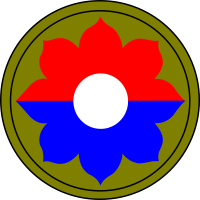UPDATED 12 January 2011
GUERRILLA BATTALION, U.S. STYLE
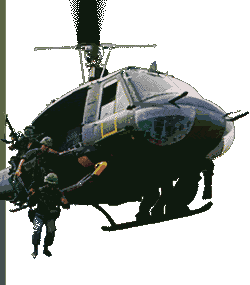
[Editor's notes: read Colonel David Hackworth's concept with hyperlinks that amplify his points. Rather than stay in the time frame we supply modern references--the whole point of this treatise is to create our own highly terrain agile light infantry TODAY. Enjoy.]
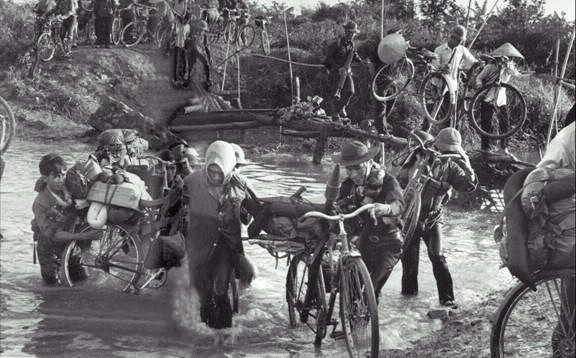
By mid-1969 the 4th Battalion, 39th Infantry had set Vietnam's guerrilla-dominated Delta on fire. This battalion's achievements weren't accomplished with conventionally trained Soldiers, led by conventionally oriented leaders, but by American Soldiers who fought and thought like their guerrilla foes and by leaders who followed Mao's handbook on guerrilla warfare.
Since early January 1969, the battalion, known as the "Hardcore Battalion" throughout the 9th Infantry Division, had lived and fought under virtually the same harsh and demanding conditions as the Viet Cong. The troopers had become lean and hard, and had the sort of pride that comes only from sacrifice. There were no suburban luxuries like cold beer and tape recorders, for example. According to one expert on guerrilla warfare, the Hardcore Battalion had become more proficient at this form of warfare than the elite guerrilla units that they challenged daily in western Dinh Tuong Province. The helicopters and airstrikes helped, but the attitude of the men was the determining factor.
Surprise, deception, mobility, imagination, cunning, and familiarity with every stream, trail, hamlet, and village within the area of operations (AO) were the characteristics of Hardcore's tactics. The battalion acquired an ability to move at night with stealth and ease, and when it struck, it struck hard. The catalyst for all of this was alertness, which came to be the cardinal requirement.
Little dependence was place on the sophisticated machinery of modern warfare. The helicopter was viewed not as some magic panacea for winning the war, but as a vehicle to move men into battle. Ground radar, sniffers, technical intelligence devices and countless other mechanical gimmicks which had been developed to bring a quick and easy solution to the war were used, but only as a means to an end. They weren't considered an end in themselves. The battalion's concept was that machinery doesn't win battles. Battles are won only by trained, dedicated, hightly motivated men who are expertly led.
As guerrillas, the Hardcore Battalion adopted the Asian's contempt for time, and they never hurried. They were slow, careful and methodical. In strick accordance with Mao's rules of guerrilla warfare, they would fight only when victory was assured at a minimal cost in friendly casualties. The battalion's most priceless assests were its troopers, and their safety was always uppermost in the commander's mind. If an element had to attack across an open rice paddy through anti-personnel mines to take a bunkered position just to kill a few enemy, then forget it! No attack would be made. "We'll stick it hard with artillery and air, sneak to their rear and ambush them as they try to run away.." would be the solution. The Hardcore Battalion didn't believe in "Hamburger Hills".
This talk of safety shouldn't imply timidness or reluctance, for the battalion was bold and took risks few units would take, providing the game would be played according to their rules.
The battalion's primary tactic was the ambush. Its units operated in widely decentralized platoon or smaller formations, normally over a 50-kilometer AO. Obviously, this type of employment required small unit leaders of exceptional skill. Weak leaders were replaced. Company commanders were hand-picked, ideally had two previous Vietnam tours and possessed the ability to operate independently as guerrilla chieftains.
Company commanders trained with an Australian Infantry company for four weeks, where they learned platoon and company tactics from the finest jungle fighters in the world. In addition, all leaders (E6 and above) were expected to operate. This theoretical instruction was augmented by a minimum of two weeks on-the-job training with a proven guerilla leader. Here the new leader learned tricks that weren't taught at West Point or Fort Benning, but which were need-to-know in order to "outfox the fox".
The battalion's basic organization was drastically modified to facilitate the ambush concept. All rifle company heavy weapons platoons were converted into rifle platoons. The battalion was stripped down by eliminating extraneous equipment. The battalion's reconnaissance and heavy mortar platoons were transformed into a sniper and special action force respectively.
Each of the rifle companies was assigned a specific tactical mission. Each was given broad guidance, time to conduct needed special training and maximum latitude in developing and preparing its organization.
Company A became the long-range ambush company and was organized into two 60-man heavy platoons. Its mission was to operate on the periphery of the battalion's AO. One platoon was always deployed, while the other stood down, resting and training. the deployed platoon would normally enter the target area by helicopter several hours before dusk, as part of another company which would be assigned a target in that area. While the airmobile force, or "jitterbug," was on the ground, the heavy ambush platoon would go into hiding. After dark, the platoon would move to its first ambush site, to set up where there was evidence of frequent enemy movement.
The platoon used artillery defensive concentrations (DEFCONs), dug deep, carefully camouflaged its positions, and conducted limited local patrolling around its base. Movement during daylight and helicopter overflights were forbidden. The ground commander moved his ambush when he had concluded that the fish would no longer bite or in concert with future battalion plans. This platoon normally stayed out six days and was picked up by helicopter after its sister element was inserted in another area. The company commander occasionally went out with a platoon to set the example and check on operations. Normally, he remained at his company base camp monitoring operations, prepared to lead the stand-down platoon or the initial reinforcement element and planning future operations.
Company C
The commanders of Alpha and Charlie companies were each assigned a general area of operations and given maximum independence and latitude. Their ambush commander in turn would conduct detailed intelligence collection, reconnaissance and other necessary troop leading procedures. Once they had selected the exact ambush sites, they would present a detailed briefing to the battalion commander.
It wasn't long before these two commanders knew the battlefield better than their own personnel files. Most contacts were with the small enemy forces at night, which were moving by sampan or on trails alongside canals. Contacts were violent and brief. Claymores and fragmentation grenades were the main weapons, and small arms were seldom used. The surprise effect was so great that the VC normally died in the killing zone without returning fire. At first light the killing zone would be swept and enemy weapons, documents and other material would be secured for eventual evacuation to battalion.
Both ambush companies conducted all operations by the book--air recons--rehearsals--sandtable briefings--detailed before-mission personnel inspections. The battalion staff spot-checked all stages of the before-missions preparations.
Bravo and Delta companies were organized similiar to Korean war-vintage Ranger companies. These units were the "guerrilla" companies and rotated on operational missions. One company would stand-down at the fire support base (FSB) and serve at the battalion reaction force, while its sister unit would operate in a cleary defined AO. The areas were selected after a meticulous intelligence profile was made. Every intelligence profile was made. Every intelligence source available to the battalion was used, from the super-secret black box in the delta-winged jet to the wrinkled brown farmer who tilled the rice paddy. When completed, the intelligence profile blinked like a neon light that pointed a bright red arrow at the enemy. The guerrilla companies conducted the same exacting pre-operation prepartions as the ambush companies. Nothing was missed.
The guerrilla company normally entered its AO by a night overland march or as a last insert on a "jitterbug." When the airmobile insertion was used, the birds would return to the landing zone after the company had concealed itself in a hiding position and conduct a false pick-up. As the slicks came in for the pick-up, the aircraft doors would be open. But on lift-off they would be closed, to deceive a sharp-eyed enemy who might be observing from the distance. After dark, the company would move to its ambush sites and set up. The exact number of ambushes depended on the ground commander's estimate, based on the tired but true cliche: the enemy, terrain and weather. At first light, the company would assemble, dry out from a long night of soaking in the Delta paddies, and sleep. Only outguards would remain alert and provide security.
At about 1500 hours, the company would commence checkerboarding in the direction of its next night ambush location. The rear guard platoon always would go into a "hide" location as close as possible to the "dry out" position and then sneak back as a stay-behind force. The batting average for kills by these stay-behind elements never slipped below .500.
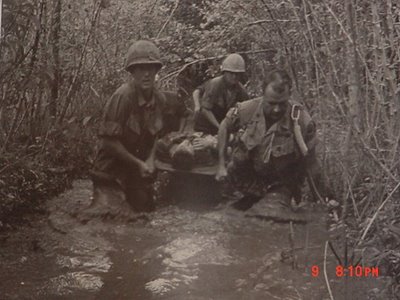
All units traveled light. Only essential equipment was taken For the Soldier this meant weapon, ammo, load-bearing equipment, poncho, rations, and air mattress. The standard 70-pound rucksack which is so popular with many U.S. units was forbidden. Resupply aircraft weren't used and units lived off the land, just like their guerrilla opponents. Medevac was summoned only for seriously wounded. Lightly wounded and moderately sick went along with their units. Everyone realized that once a chopper came near the element, the operation was compromised, and the enemy would know exact locations and intentions of the friendlies.

The sniper platoon was a 15-man element commanded by one of the sharpest lieutenants in the battalion. His command consisted of 7 x two-man sniper teams of handpicked volunteers. These sniper teams received comprehensive training conducted by the 9th Division's Sniper School. They wore a special uniform, received quick promotions and had high priority on awards. In short, they were the spoiled children of the battalion commander and everyone knew it. Consequently, men fought to become snipers.
During the day, four sniper teams were employed, while two were used at night and one stood down. the day sniper teams would be augmented by three volunteers from headquarters company. this would make a five-man team: two snipers, one RTO and two security men. Each day at 1600 hours Sniper 6 met with the short-range ambush commander and the battalion commander to outline the planned sniper activity for that night and the following day. Adjustments would be made to insure that Company C's short-range ambushes and other battalion activiites would be complemented by the snipers' operation. At first light, a slick, escorted by a gunship, inserted each of the five-man teams individually in a 10-kilometer area around the FSB. By dawn the teams were in a concealed position, had set up all-around security and had commenced their search for enemy Soldiers. Just before dark, the teams would be picked up and returned to the FSB. The night teams, working with starlight scopes and pink filters, would normally set up at Regional Forces outposts. Sniper 6 would select the exact sites, based on intelligence, and conduct necessary coordination with the district chief.
The special action force was an 18-man volunteer platoon composed of 12 Vietnamese-sezed American's and six Tiger Scouts (former enemy Soldiers who had changed to the government's side and volunteered to work as scouts). This force, operating in black pajamas, armed with Russian AK47s and other captured Communist equipment, conducted covert operations such as prisoner snatches, collection of intelligence or special reconnaissance missions. Lieutenant Colonel Trinquer's book on French Army guerrilla Tactics, "Modern Warfare," served as their "bible".
Jitterbug operations were normally conducted every third day by the stand-down guerrilla company. These operations were tightly controlled by the battalion commander and his staff. The day before the operation, an intelligence analysis would be made of the battalion's area of influence. District, Province, RF, PF, U.S. Special Forces, ARVN units, higher headquarters, and the battalion's own agent net were squeezed for the last drop of information. Targets were selected and priorities assigned based upon many factors, such as target perishability, optimum blade-time utilization, location of friendly units, placement of supporting fires, and probable enemy strengths. Next, the battalion CO, S2 and S3 attended a target metting at brigade. Here, each target was discussed in detail, and additional brigade or division targets were assigned, based on "hotter dope." By midnight the target priorities had been finalized and about 20 blue target circles would be printed on a map. At first light the command and control (C&C) aircraft and the air cavalry commander arrived at the FSB and were briefed with the Infantry CO on targets, call-signs, frequencies, pick-up zones (PZs), landing zones (LZs), unit SOPs, rearm and refuel points, and air cav recon zones.
At the designated hour the air cav troop moved to its recon zones, the C&C bird headed towards the first target and the initial lift of Infanry moved into a PZ formaion. The C&C bird carried a minimum of six Air Force CS canisters. If, in the commander's judgement, the target appeared not worth striking--this would be based on lack of fresh trail activity or recent signs of enemy movement, gut feeling, and other tell-tale signs of the enemy--a CS canister might be kicked out, followed by gunship reconnaissance fire. If the CS and machinegun fire didn't stir things up, the target might be scratched.
If the second target looked good, a rifle platoon would be inserted. The gunships and a forward air controller would cover the platoon while it searched out the target area. If no contact was made, the C&C would move to the next target, and the Infantry at the second target would move into a PZ formation. This procedure would be followed all day and would be broken only if solid contact as made. Based on the size of the contact, Infantry troops and adequate combat support would pile on the contact to seal the enemy force. Experience gained by the Hardcore Battalion makes this axiom ring true when jitterbugging: there is a direct correlation between the number of inserts and the number of contacts made. Maximum inserts result in a high number of contacts. But great care must be taken to insure that the small Infantry force doesn't bite off more than it can handle, for it can be harshly treated by a clever enemy waiting in ambush.
The PPS-5 ground radar tracked the enemy's movement at night and was normally set up at a district headquarters, or with RF or PF outposts. This way, it could scan the deployed ambush patrols more effectively. Permanent overlays were made of all radar movement, and future ambush patrols and sniper employment were based on these overlays. The radar provided the battalion with the enemy's movement pattern. It wasn't uncommon event for an ambush patrol to be notified. "You have 10 VC moving on the trail you are on. They are 400 meters from your position and moving in your direction." All enemy activity that wasn't moving towards an ambush position was plastered by artillery fire.
The VC closely follow Mao's dictum: "Our duty is to fight a protracted war, avoiding the enemy if possible, never engaging him unless it can be made certain in advance that it is to out advantage." As a result of this stratagem, the enemy was always eager to attack a small U.S. force that appeared an easy target.
The Hardcores used the following technique, or variations, to tempt their greedy opponent: A small Infantry force would be inserted by helicopter at last light and set up near the LZ. After dark it would move, leaving a clearly defined trail for enemy scouts to follow, and link up with one of the guerrilla companies which had carefully slipped into the AO. This trap brought results more times than not. On two occasions, multiple company-size enemy forces struck what they thought was a weak platoon only to find a well dug-in, reinforced rifle company, which was locked and loaded. What the enemy thought was a tender lamb was instead a sinewy tiger.
The 9th Division, like most U.S. units in Vietnam, didn't push unit training. If units were removed from operations to conduct training, then the great, misleading measurement of success--bodycount--would be decrease. Most high-level commanders in Vietnam followed the rule, "The more units in the field, the higher the contact rate. Hence, more enemy kills." The weakness of this thinking is that friendly casualties are also higher, because the troopers are inadequately trained and are careless because of overexposure.
A 4/39 Infantry, being a band of guerrillas, outfoxed their division headquarters, which never caught on to their training program. Each week, two platoons would slip from the FSB to division rear for a rigorous one-week training program. This program used all the assets of the division training facilities and was closely monitored by the battalion executive officer. The troopers looked forward to this week. They knew they would train hard for a minimum of 12 hours a day, but they also knew they could relax and forget about hunting Charlie for a while. The training program paid quick dividends: morale went up, casualties went down, and the battalion became a little sharper at outwitting the guerrilla.
The tactical innovations discussed here weren't played as separate musical instruments with each musician doing his own thng. They were employed in close concert with each other, closely controlled by the battalion commander. One example:
Early morning, May 21, 1969, intelligence indicated that a large enemy force was staging to the north of FSB Danger. At 0700 hours a special action force element was dispatched, with the mission "get a prisioner." Simultaneously, two battalion controlled civilian agents were told to infiltrate the suspected enemy assembly area to determine the size and mission of the enemy force.
The agents and the SAF element were back by 1000 hours. SAF didn't have a POW to show for its efforts, but it had made contact with an enemy patrol and killed four of them. One of the KIA was the recon company commander of the 261A VC Battalion. Found on him was a map showing attack plans against a nearby RF company, including company objectives, movement routes, supporting weapons sites, and most importantly, the exact location of each assembly area for all the companies in the 261A Battalion. The agents confirmed that it was 261A and concluded that it was ready to jump off.
The Hardcore commander deduced that the attack on the RF company was of secondary importance. The enemy's objective was to frighten the people of Giao Duc, for if an RF company could be destroyed right under the nose of a U.S. battalion, how secure was the average peasant?
The enemy's plan might have worked had the American opponent been a unit which played by ordinary rules. But this opponent was a guerrilla like himself, who cheated and read his hand, then stacked the deck.
The U.S. battalion readied itself for combat. Holes weren't bored in the sky by helicopters [today its UAVs] circling over the target. Nor was artillery and tac air placed blindly on red dots on the map marking VC locations. Helicopters weren't hastily assembled for an ill-planned airmobile assault. The battalion knew that the enemy would be gone slick as a whistle before the lead ship set down on the LZ.
Experience had taught this lesson well. The VC can't be destroyed by conventional tactics employed by the average U.S. battalion in Vietnam. Only guerrilla tactics augmented by U.S. firepower can defeat the enemy at low cost.
The target was perishable. The enemy wouldn't linger long in the assemby area. He would either attack soon or slink away. He had to be baited to stay one more night. Two M41 Dusters, with potent twin 40mm cannons, and a rifle platoon were moved to the RF outpost to reinforce it. It was hoped that this would cause the enemy to reassess his attack plans, thus buying time. False helicopter insertions were made along all the enemy's probable withdrawal routes, to cause him to think twice before running away into a possible "hornet's nest" of ambushes.
After these deceptive measures were taken to keep "the bird in the cage", the following concept of operations was outlined to the commander:
Each rifle company would be divided into two parts. Half the battalion, operating under company control, would infiltrate at dark and establish ambush positions by 0600 on May 22d. The other half of the battalion, less one heavy platoon from Company A which would be the battalion reaction force, would conduct a combat assault at first light. The combat assault force's mission wasn't to become decisively engaged, but to serve as the "beater" and get the "rabbit running".
All preparations were carefully concealed. The battalion knew that the VC constantly observe all U.S. installations, searching for signs of unusual activity. Harassing and interdiction (H&I) fires weren't increased. Recons weren't allowed and everything at FSB Danger went on its normal merry routine.
After dark, the ambush forces moved out. Long lines of ghostly columns moved silently along separate infiltration routes towards their critical blocking positions. Stealth was the key. One careless movement could blow the show.
At 0600 hours all ambush elements were in posiion and the stage was set to spring the trap. At 0700 hours, the airmobile force was launched. Once the "beaters" were on the ground, the enemy reacted as if it were an aggressor force at Fort Benning and followed the scenario according to plan.
"The helicopter assault was the prop designed to cause Charlied to blow his cool." related Major George Mergner, battaliion operations officer. He continued, "Lose his cool he did. The minute the first bird hit the LZ, the enemy was on the move. He was attracted to the ambush sites as if he was being pulled by powerful magnets. But the magnets were our ambush positions which had been painstakingly selected, based upon Charlie's most likely escape routes."
"I've never seen anything like it." said Captain James Mukoyama, a company commander. "The VC bounced off one ambush after another. Almost like a spinning ball in a pinball machine. Each time they ran panic-stricken into one ambush, they would lose a dozen or so men and bounce off, only to hit another blocked escape route."
All morning long the enemy tried to escape. He couldn't hide because heavy artillery fire, tac air and gunships blasted all possible hiding postions. There wasn't one inch of ground that he could use to escape this murderous fire or the probing thrusts of the airmobile search force.
By 1200 hours, the enemy command structure had disintegrated. Enemy Soldiers ran in every direction, only to be cut down by gunships or battalion sniper teams attached to the maneuver elements.
By 1800 hours the first was over. All elements of the battalion had departed the battlefield except Company C, which went into a hide position after a false helicopter pick-up. That night their ambushes killed 17 VC who had hidden in the reeds all day and tried to escape under cover of darkness. Friendly casualilties: two U.S. slightly wounded. Enemy casualties: 167 KIA, seven POWs and numerous weapons captured.
This ends the story of a battalion which used radical techniques to win. Yet these techniques weren't new. Marion had used the same unorthodox tricks at Cowpens, as had Rogers against the French at Detroit. The Hardcores had simply updated the tactics of our guerilla forefathers and given them a 1969 Vietnam twist.
From January to late May 1969, the Hardcore Battalion killed over 2,700 enemy Soldiers with a loss of 26 troopers. But more important than the usually exaggerated bodycount figures, the western portion of Dinh Tuong Province was made secure. The people of Giao Duc idenitified with the governament. An average of eight Viet Cong infrastructure rallied to the Giao Duc District force per week. The enemy's main force units were shattered and rendered ineffective. There was "light at the end of the tunnel" in one small area of South Vietnam.
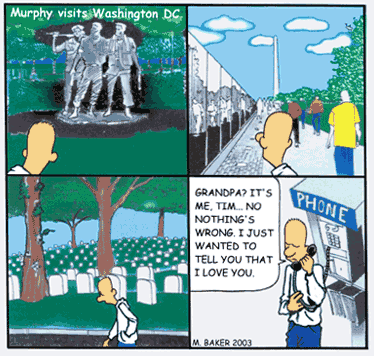
Want Pvt Murphy in your pocket?
 Return to U.S. Army Airborne Equipment Shop
Return to U.S. Army Airborne Equipment Shop
